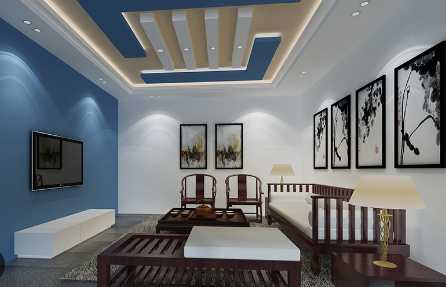Bedroom interior design plays a vital role in enhancing comfort and aesthetics. A well-designed bedroom can improve relaxation and sleep quality. This comprehensive guide explores various aspects of bedroom design, including styles, color palettes, furniture choices, and trends.
Understanding Bedroom Interior Design
What Is Bedroom Interior Design?
Bedroom interior design refers to the planning and decorating of bedroom spaces. This includes selecting furniture, colors, lighting, and accessories. Consequently, thoughtful design creates an inviting and functional environment.
Importance of Bedroom Interior Design
The design of your bedroom significantly impacts your mood and well-being. A well-designed space fosters relaxation, reduces stress, and enhances sleep quality. Therefore, investing time in bedroom design is essential for overall happiness.
Key Elements of Bedroom Design
Color Palettes
Choosing the right color palette is crucial in bedroom interior design. Colors evoke emotions and set the room’s overall mood. Consequently, selecting soothing colors, such as blues and greens, promotes relaxation.
Popular Color Schemes
Popular color schemes for bedrooms include soft pastels and earthy tones. These colors create a calming atmosphere that encourages restfulness. Therefore, consider using a mix of these shades for an inviting space.
Furniture Selection
Selecting the right furniture is vital for both aesthetics and functionality. Essential pieces include the bed, nightstands, and dressers. Consequently, choosing furniture that complements your style enhances the overall design.
Bed Types
The bed is the focal point of any bedroom, making its selection critical. Options range from platform beds to canopy beds and upholstered styles. Therefore, choose a bed that aligns with your personal taste and room dimensions.
Lighting Design
Effective lighting design can dramatically change the bedroom’s ambiance. A combination of ambient, task, and accent lighting creates a versatile space. Consequently, consider layered lighting to achieve the desired mood.
Types of Lighting
Common types of bedroom lighting include chandeliers, bedside lamps, and wall sconces. Each type serves a unique purpose while contributing to the overall design. Therefore, incorporating various lighting sources enhances functionality and aesthetics.
Styles of Bedroom Interior Design
Modern Bedroom Design
Modern bedroom design emphasizes simplicity, clean lines, and minimalism. This style often incorporates neutral colors and functional furniture. Consequently, modern designs create a serene and uncluttered environment.
Key Features of Modern Design
Key features of modern bedroom design include geometric shapes and open spaces. Additionally, minimal decor allows the furniture and colors to shine. Therefore, this style promotes a sense of tranquility.
Rustic Bedroom Design
Rustic bedroom design embraces natural materials and a cozy atmosphere. This style often features wooden elements, warm colors, and textured fabrics. Consequently, rustic design creates a comfortable and inviting retreat.
Elements of Rustic Design
Common elements of rustic bedroom design include reclaimed wood furniture and nature-inspired decor. These features evoke a sense of warmth and connection to nature. Therefore, incorporating these elements enhances the overall aesthetic.
Bohemian Bedroom Design
Bohemian bedroom design celebrates creativity and individuality through eclectic decor. This style often includes bold colors, patterns, and various textures. Consequently, bohemian design allows for personal expression and unique combinations.
Key Characteristics of Bohemian Style
Key characteristics of bohemian design include layered textiles, mismatched furniture, and an abundance of plants. This creates a vibrant and inviting space. Therefore, embracing this style can lead to a truly personalized bedroom.
Space Planning and Layout
Assessing Room Size
Before designing your bedroom, assessing the room size is essential. Understanding the dimensions helps determine furniture placement and layout. Consequently, this ensures a functional and comfortable space.
Furniture Arrangement
Furniture arrangement significantly affects the bedroom’s flow and usability. Consider the function of each piece and how it fits into the space. Therefore, prioritize accessibility and comfort when arranging furniture.
Creating a Focal Point
Creating a focal point in the bedroom enhances visual interest. Common focal points include the bed, artwork, or a statement piece of furniture. Consequently, emphasizing a focal point draws attention and creates a cohesive design.
Accessories and Decor
Choosing Bedding
Bedding is an essential component of bedroom interior design. Selecting comfortable, stylish bedding enhances the room’s overall aesthetic. Consequently, choose colors and patterns that complement the bedroom’s design theme.
Adding Decorative Pillows
Decorative pillows can add texture and color to the bedroom. Mixing different sizes, shapes, and patterns creates a visually appealing look. Therefore, consider incorporating decorative pillows to enhance comfort and style.
Wall Art and Decor
Wall art and decor play a crucial role in personalizing your space. Consider using paintings, photographs, or mirrors to enhance the room. Consequently, wall decor adds character and reflects your personality.
Trends in Bedroom Interior Design
Sustainable Design Practices
Sustainable design practices are becoming increasingly important in bedroom design. Incorporating eco-friendly materials and energy-efficient lighting reduces environmental impact. Therefore, consider sustainability when selecting furniture and decor.
Smart Bedroom Technology
Smart technology is revolutionizing bedroom design. Features such as smart lighting, automated blinds, and integrated sound systems enhance convenience. Consequently, incorporating smart technology can improve functionality and comfort.
Minimalist Aesthetics
Minimalist aesthetics continue to gain popularity in bedroom design. This trend emphasizes simplicity and functionality while eliminating clutter. Therefore, a minimalist approach creates a serene and peaceful environment.
DIY Bedroom Design Ideas
Budget-Friendly Decor
DIY projects can help personalize your bedroom without breaking the bank. Consider creating your own wall art or upcycling furniture for a unique touch. Consequently, budget-friendly decor allows for creative expression.
Customizing Furniture
Customizing furniture pieces can enhance their uniqueness and functionality. Consider painting, staining, or reupholstering items to fit your design vision. Therefore, personalized furniture adds character and style to your bedroom.
Incorporating Personal Touches
Incorporating personal touches into your bedroom design creates a unique atmosphere. Family photos, souvenirs, and cherished items can enhance the space. Consequently, these elements tell your story and make the room feel more like home.
Conclusion
In conclusion, bedroom interior design plays a crucial role in creating a comfortable and inviting space. By understanding key elements, styles, and trends, you can craft a personal sanctuary that reflects your taste. From color palettes to furniture choices, each decision contributes to the overall ambiance.
Whether you opt for modern minimalism, rustic charm, or bohemian flair, thoughtful design enhances your bedroom experience. Investing time and effort into your bedroom’s interior design ensures a serene retreat for relaxation and rejuvenation. Ultimately, your bedroom should be a reflection of your personality and a space where you feel truly at home.






